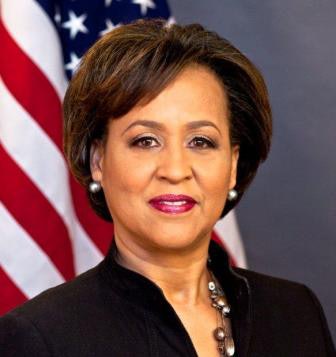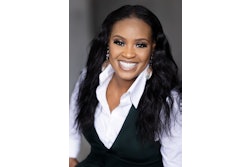 Pamela Gibbs, the inaugural leader of SEC’s inclusion program, is looking to diversify the financial securities industry by drawing in undergraduate minorities and women.
Pamela Gibbs, the inaugural leader of SEC’s inclusion program, is looking to diversify the financial securities industry by drawing in undergraduate minorities and women.
“I always had this fantasy of doing civil rights and equal employment opportunity law,” says Gibbs, director of the office of Minority and Women Inclusion at the U.S. Securities and Exchange Commission (SEC).
Gibbs — who grew up in Fauquier County, Va., at a time when segregation was still prevalent and in a town where many public establishments still closed their doors to African-Americans — credits her parents, who were strong advocates of education, for being the force behind their children’s paths to becoming first-generation college graduates.
As an undergraduate student at the University of Virginia during a time of racial transition, Gibbs was one of only 5 percent of African-Americans who attended the university. While there, she was active in the movement to advocate for increased diversity among faculty members.
After receiving her master’s in public administration from George Mason University and juris doctor from Georgetown University Law Center, Gibbs began a career in the civil rights division of the Office of the Solicitor in the Labor Department as a trial attorney.
For more than eight years, she was responsible for overseeing complaints and compliance reviews, enforcing affirmative action obligations and addressing class action suits of discrimination. Though the opportunity to work in her desired vocation, along with the ability to travel and gain trial experience, was beneficial to her professional growth, Gibbs found that her expertise would better serve the agency in another capacity.
“What I realized … is that I prefer to … help resolve matters before they became complaints and litigation,” says Gibbs, who made a career shift in 2009 as director for the Office of Diversity and Inclusion at the U.S. Commodity Futures Training Division.
From this experience, Gibbs gained the necessary skills for her role as the inaugural director of the SEC’s Office of Minority and Women Inclusion, which is responsible for all matters relating to diversity in management, employment and business activities in the agency.
Working as a director of diversity and inclusion at the SEC has been her most gratifying career move yet. The passion for her work lies in her acceptance that the SEC is the investor’s advocate, and the more diversity within the agency, the better it can protect investors, the market and the country.
Currently, the SEC’s workforce is made up of 46 percent women and 32 percent minorities. Gibbs works to address the underrepresentation of these demographics by engaging with external organizations and minorities to expose the work of the SEC.
“I learned that many minorities in particular are unfamiliar with our agency and mission,” she says. “The industry itself is a byproduct of the underrepresentation of minorities in the financial securities industry as a whole.”
A primary component of Gibbs’ outreach is making contact with students at historically Black colleges and universities, Hispanic-serving institutions, majority-minority institutions and women colleges.
“I believe it starts here, [in college],” says Gibbs. “In order to have a career in the financial services industry, you have to start the preparation process as early as possible. This is why I find it so interesting and fascinating for me to be able to connect and expose these schools to careers, opportunities and tools that are necessary to be successful.”
Since SEC is an agency that is experiencing increasingly dynamic organizational changes, a crucial factor in student outreach is ensuring that students are aware of the broad doors for entry into the sector. Economists, auditors, accountants, lawyers and information technologists make up 77 percent of the SEC’s employees.
For the past two years, the Office of Minority and Women Inclusion has primarily targeted graduate students in these fields. However, during the next two years, Gibbs’ goal is to raise awareness among undergraduate sophomores and juniors at all designated minority-serving universities to guide their academic paths toward the securities industry, whether they are currently interested in the sector or have yet to decide on a career path.
Her pipeline also consists of mimicking SEC’s signature shadowing program for high schools, where students spend two days of mentorship on-site by SEC professionals, to provide the same experience for college students.
By all possible means, Gibbs is strategizing ways to educate minorities and women so that minority communities are well versed in the challenges and opportunities within the securities industry and are able play a vital role in its success.
“I believe [that], in order to address areas of underrepresentation, there is no question that we need to take proactive steps to conduct outreach and to ensure we have eliminated any barriers for leveling the playing field for access to opportunities,” she says.















